 KISS ME DEADLY
KISS ME DEADLYKINO-PORNO-PRAVDA, a pornographer behind the camera
Alessandro Mercuri __ February 20, 2012

THERE IS NO SEXUAL RAPPORT
A film by Raphaël Siboni with HPG
79 min / 2011 / X-rated
“After having put forward this which has the advantage of opening up to you my perspective, my project, I start again from something which concerns this point which is of the order of this surprise to which is signaled the effect of retrogression by which I have tried to define the junction between truth and knowledge and that I stated in the following terms that there is no sexual rapport in the speaking being.”
The artist Raphaël Siboni, entitling his first full-length documentary film “There Is No Sexual Rapport”, borrowed Jacques Lacan’s famous aphorism from the oral seminar 18 (“On a Discourse that might not be a semblance” 1971), a conjuring trick and passing shot of syntax over speech. “There is no sexual rapport” is indeed a documentary, a montage of rough, pre-existing and already recorded documents filmed by a tripod-mounted camera at man’s height. Who films what? Raphaël Siboni is not behind the camera. The HDV camera belongs to HPG. HDV stands for High Definition Video. HPG for Hervé-Pierre Gustave, actor, producer, filmmaker and camera-man of his own gonzo, pornographic movies ; a pornographer and conductor who has been used to documenting his own film shoots for many years. While HPG films naked, a turgescent camera in hand and his penis erect, a second camera, supremely impassive, covers in long high-angle shots all the photo and video shootings, whether erotic, porn, soft-core or hardcore sequences of real, explicit or simulated sex. In long takes, this camera stares at and observes the set, before, during and after the sacrosanct pornographic trinity: fellatio, copulation, ejaculation.
In a systematic way, each sequence starts with an identity line-up: the faces of men and women showing the camera both sides of their passports, driving licenses, identity and social security cards. These close shots serve to prove that the actors and actresses are consenting adults. While the legal documents are blurred, throughout the documentary the viewer can read the names of the participants preceded by four figures at the bottom left-hand corner of the frame: 2785 - Cindy Dollar - Michael Cherrito, 2822 - Stracy Stone - Phil Holliday, 2735 - Ariana Agia - Phil Holliday, 3222 - Darlyne - Marco, 3197 - Dolce Elektra - Marco - Supersex - Storm, 3109 - Leona Fell - Storm - Super Pussy, 3090 - Nymphy - Storm, 3098 - Sexy Black - Storm, 3252 - Pom-Pom Girl - Storm... The stage names of the porn actors whose sequences are carefully indexed and numbered.
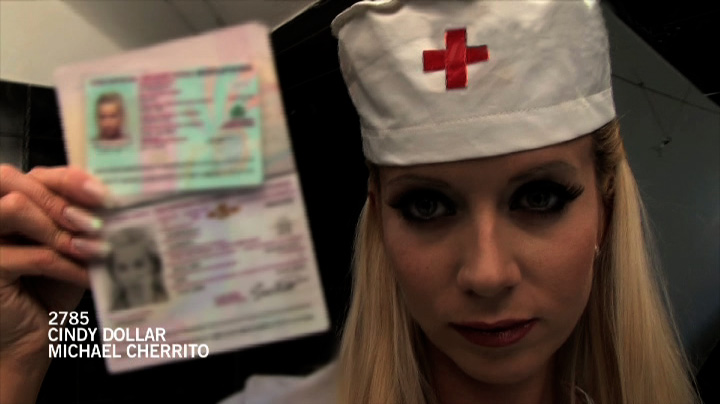
2785 – In a bathroom, dressed up as a nurse, Cindy Dollar, as herself, faces HPG’s camera, pouting alluringly with a finger between her lips. The angle of the making-of camera is spatially out of line compared to the action shown in the frame. We can see from a three-quarter angle what the pornographer’s camera sees frontally. Cindy Dollar ignores the second, behind-the-scene, camera and stares into the eye of the first camera. Something odd and incongruous is conveyed, though not any longer by the scene itself but by the very composition of the image. Via this particular viewpoint and the duration of the takes, previously unsuspected details become visible. For instance, at the other end of the room, beneath a window, we discover a washing-machine in backlight with a round glass-door slightly ajar. The peculiar presence of a side aspect and of the out-of-shot setting thus being revealed, our eyes hesitate and our pupils alternate between the woman in full light and the domestic appliance in the dark. Everything is summed up in circular vision: round glass-door, oculus, lens, optical orifice, lustful look, lascivious camera. Cf. Georges Bataille’s Story of the Eye.

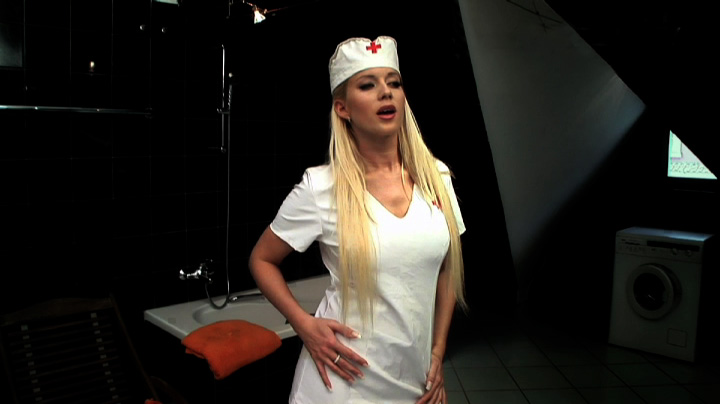
A piercing glint of light which radiates the dark corners of the room is followed by the crackling of a flash and of a shutter. HPG has started the photographic shoot of a strip-tease. Pinched lips mimicking a predatory kiss, exaggerated pose, over-insistent, grotesque and sensual simpering accompany the strip-tease sequence under the gaze which undresses the woman. Miss Dollar’s bright red G-stings and bras remind us of the lingerie of other artists such as circus trapezists and acrobats, and of the world of the music-hall, of magic and fun fairs, which were the forerunners of the cinematograph.
Often shot and shown in brothels, the first pornographic films were contemporary with the Brothers Lumière’s. Brothels, dark rooms, camera oscura. Of the birth of cinematography and of prostitution as a show. The word “pornography” derives from the Greek words “pornê”, “prostitute”, and “graphein”, “to write”. Photographic or cinematographic, porn is the written expression — and thus the language — of prostitution, revealed by light or movement.
In the entrancing or sordid kingdom of porn, illuminating male fantasies with its pallid lights, HPG is a gonzo porn filmmaker. Originally an obvious concept of the counter-culture, gonzo has become a cinematographic sub-genre of the pornographic sub-culture. Similar to a stone thrown into the glasshouse of journalistic dogma, gonzo officially appeared as an offensive hurled into the face of editorial conformism and of the belief in the all-powerful objectivity of the press. Psychedelic, journalistic gonzo aspires to plunge in a subjectivist way into the heart of darkness and action by asserting the impossibility of any omniscient look. Pornographic gonzo distinguishes itself by the almost exclusive use of a subjective camera. The lens of the camera becomes a visual prosthesis through which the eye of the viewer is in total unity with the actions and the sexual organs of the actors. Nevertheless the subjectivity, as it is called, of this camera does not correspond to that of the eye. For here the immersion effect is wholly different. The derangement of the senses found in psychedelic gonzo has been superseded by a vision of bodies and coitus which is hallucinatory and objectivist, hygienistic and deliberately hyper-realistic.
The movie “There is no sexual rapport” thus shows the real aspects of the shooting of a gonzo film via a tripod-mounted camera filming without interruption HPG, who himself is filming with a subjective camera in hand. What could be the nature of this making-of? “Concerning HPG’s rushes, this material is all the more ambiguous as it is both personal archives and a product aimed at a commercial exploitation under the form of fake ‘live’ action”, says Raphaël Siboni. The “-ing” ending of the word “making” naturally insists on the evolving process —capturing things while they are occurring—, which expands through time, unceasingly evolving, with time present being constantly transformed. The function of a making-of is to reveal the work in progress and, in the case of a pornographic movie, to show the sex-workers at work: actors and actresses before, during and after their sexual performances.
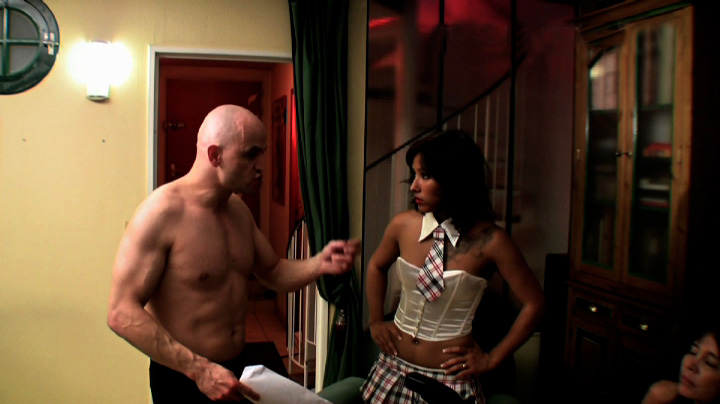
If anything occurs in the film, if anything literally happens, it consists in showing what cinema shows less and less: work. After all, isn’t the function of pornography to show what must remain hidden and to say what must not be said? In the same way as the films noirs casting gangsters, mobsters and crooks explored the reality of economical exchanges and the essence of money in all its violence and cruelty (hold-ups, scams, thefts, prostitution, drug trafficking, money laundering…), pornographic cinema can be read as a metaphor of the workplace and of exploitation in all its brutality and crudeness: the sales of its workforce, body and mind included, physical and sexual.
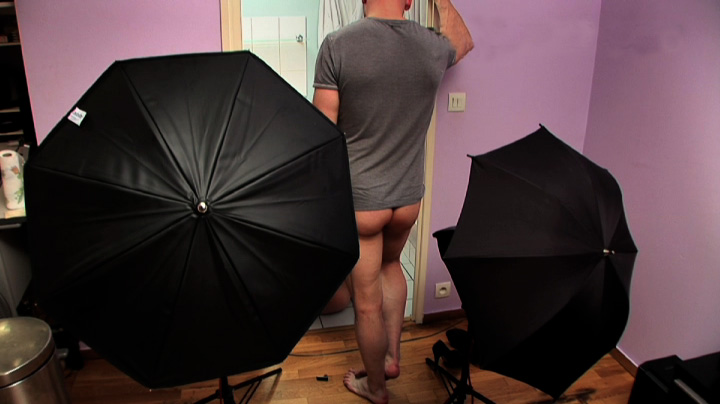
The productivity-obsessed and consumerist porn parable can also be found in the audiovisual rhetoric. The photographic cum-shot may be compared to the advertising pack-shot. The orgasmic and spermophiliac* shot may be compared to the photograph of any product, such as a perfume bottle or a yogurt pot. This is what was decided by the French General Commission of Terminology and Neology, under the general authority of the Prime Minister: they defined a pack-shot as a “visual shot used to identify a product” (in the Terminology Database published in the Journal Officiel of the French Republic on September 22, 2000). As for the ejaculatory cum-shot — the pornographic version of the money-shot —, which is the acme of retinal excitation, or the apex of what Linda Williams calls the ‘frenzy of the visible’ (in her book Hard Core: Power, Pleasure and the Frenzy of the Visible), it justifies, stamps and authenticates the pornographic dimension of the movie in question.
Via the filming device of the making-of the viewer is thus witness to the fabrication of porn. Could the visual reduplication which occurs within the movie replace the absence of staging by a mise en abyme, the revelation of an out-of-shot setting and of what happens on the other side of the set? But if such were the case, what would be the nature of this other side?
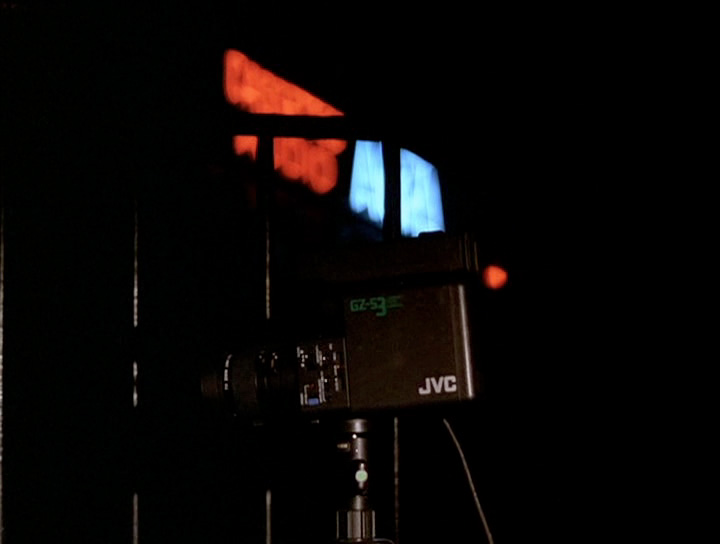
"Détective" (1985) by Jean-Luc Godard
While the fixed camera of Hervé-Pierre Gustave aka HPG is here to offer us visual porn, that of Jean-Luc Godard aka JLG offers us an insight into X-rated films in his movie Détective (1985). On top of the Hotel Concorde St Lazare, on a narrow Haussmanian balcony, a JVC video camera (which stands for Japanese Victor Company), films the street. At the window, the Princess of Bahamas played by Emmanuelle Seigner, 18, a cigarette between her lips, coils of smoke vanishing into the night, watches the nightly shady district of the Gare St Lazare. Let’s listen to what she says:
These trashy little Japanese cameras film at night as well? Have you seen all these theaters... "Veronique Licks Dick"... "Girls who Like it From Behind"... "Spread your Ass, Bitch"... I wonder why they use "X" to rate a pornographic film?
A young woman, in a voice-over and out-of-shot, replies:
It's the only letter that doesn't change directions in a mirror.
And the Princess of Bahamas answers:
But there's "O" also, it's the same front and back.
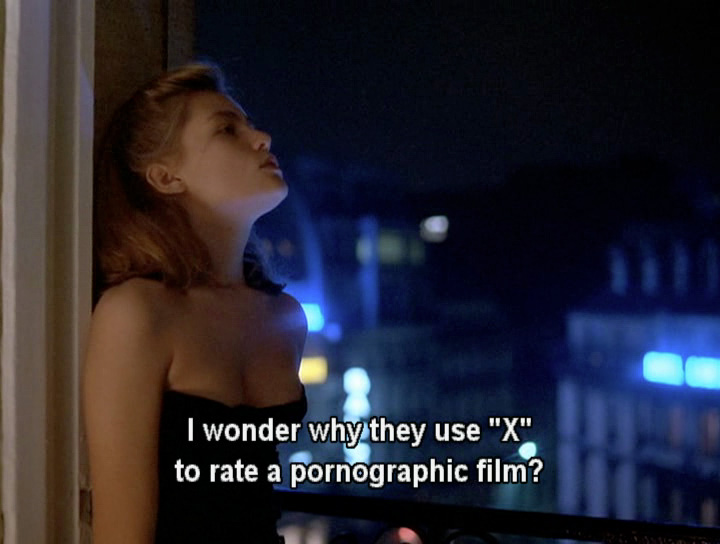
"Détective" (1985) by Jean-Luc Godard
In “There is not sexual rapport”, it is not exactly the behind-the-scenes of a hypothetical setting which is unveiled to us through the making-of camera. Of course, in a playful and comical way, from time to time tricks and special effects are revealed. Indeed, the tripod-mounted camera, which continually and in real time watches the shooting, captures the whole scene in long shots, covering the invisible part of what, filmed by HPG, camera in hand, remained deliberately outside of space and time, out of shot or between the takes. Yet this is not the main point. Actually, there is no other side, for as far as X-rated films — more often known today with multiple initials, XXX — are concerned, it's the same front and back as is pointed out by the Princess of Bahamas. It is precisely the absence of scene that could differentiate and define pornography. And if there is no scene, there is no behind-the-scenes either.While the fixed camera of Hervé-Pierre Gustave aka HPG is here to offer us visual porn, that of Jean-Luc Godard aka JLG offers us an insight into X-rated films in his movie Détective (1985). On top of the Hotel Concorde St Lazare, on a narrow Haussmanian balcony, a JVC video camera (which stands for Japanese Victor Company), films the street. At the window, the Princess of Bahamas played by Emmanuelle Seigner, 18, a cigarette between her lips, coils of smoke vanishing into the night, watches the nightly shady district of the Gare St Lazare. Let’s listen to what she says:
These trashy little Japanese cameras film at night as well? Have you seen all these theaters... "Veronique Licks Dick"... "Girls who Like it From Behind"... "Spread your Ass, Bitch"... I wonder why they use "X" to rate a pornographic film?
A young woman, in a voice-over and out-of-shot, replies:
It's the only letter that doesn't change directions in a mirror.
And the Princess of Bahamas answers:
But there's "O" also, it's the same front and back.

"Détective" (1985) by Jean-Luc Godard
Pornography is generally considered ‘obscene’. The etymology of the term is absolutely odd compared to its meaning. “Obscene” supposedly derives from the Latin word “obscenus”, “boding ill, inauspicious”; as a prophecy of doom, could obscenity be no more than a superstition? Could pornography be no more than a divinatory art? Could it be possible to read, as in the entrails of animals, on the ecstatic or suffering faces, in the male and female sexual organs? In the plural, “obscena” is supposed to mean “male genitalia” and “excrements”. As for “ob-“, the prefix of what is obscene, it could define what goes “against” the scene, as if what is ob-scene had to do with what is “off-scene” or off-stage. This is how the Italian playwright and film director Carmelo Bene sees it: "...osceno vuol dire appunto, fuori dalla scena, cioè visibilmente invisibile di sé" (“Obscene precisely refers to what is off the scene, that is to say visibly invisible by oneself”).
All the world's a stage,
And all the men and women merely players:
They have their exits and their entrances;
Yet, if “All the world’s a stage” as William Shakespeare put it in As you like it (1599), where could we find this off-stage element referred to by what is obscene? Is this off-stage area a world outside the world, a place which would not exist anywhere, an impossible to find terra incognita, a u-topia? Could pornography be a utopia of the gaze or an aporia of representation?
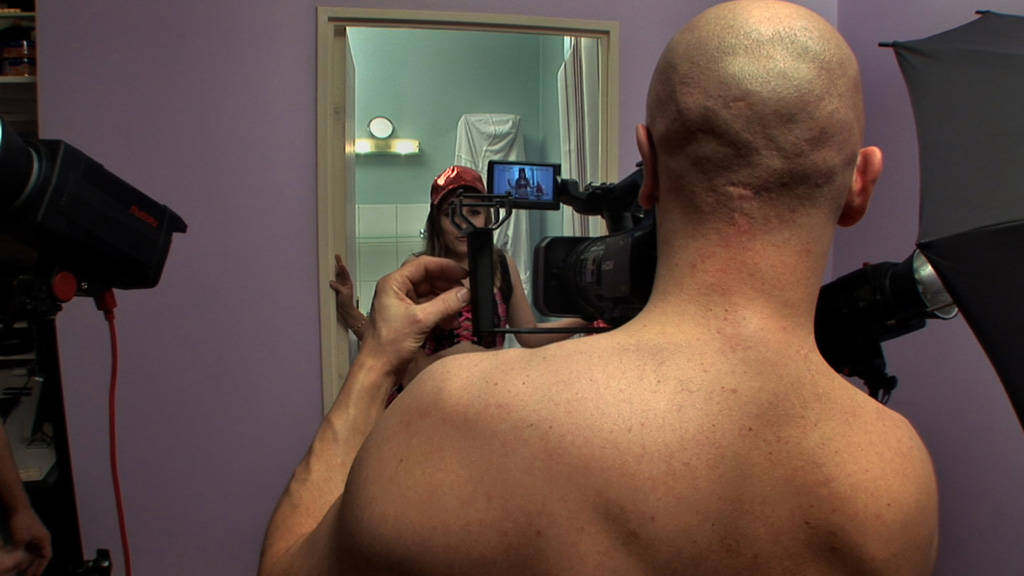
Raphaël Siboni’s cinematographic project, through the use of the making-of camera narrating HPG’s shootings, could consist in presenting our gaze with the pornographic action again, in representing it — not in staging it, but in re-staging it. Lights on tripods, spotlights, umbrella diffusers or the naked back of the filmmaker are sometimes in shot, thus concealing the action. One of the most disturbing aspects of this surveillance device lies in the fact that, once the frame is set, the camera shoots the set on its own, without anyone behind it, without re-framing, as if we were in front of an automated perception, as if we were watching what the camera sees, as if we were now witness to porn in itself and not to porn for itself any longer, for the viewer/consumer of this cinematographic genre. As much as this facing or off-center gaze may be mechanical, automatic or unceasingly repetitive, paradoxically, it seems all the more natural, naturalistic or “patently true”. Sometimes, in the middle of a shooting, HPG grabs the making-of camera and asks one of the actresses to film the scene she is part of. The HDV camera thus continues its recording while the actress, without always looking at what she is filming and without any precise goal, points the camera at anything around her. At random: the texture of skin, excrescences and organs on the erogenous surface of the bodies. So the camera films nothing. Or maybe, in all its vacuity, it films “nothingness”. We could then wonder what the role of the artist, as filmmaker or auteur, really is. Is Raphaël Siboni here merely to give artistic credence to HPG’s work? Or does the visual artist truly produce a work of art?
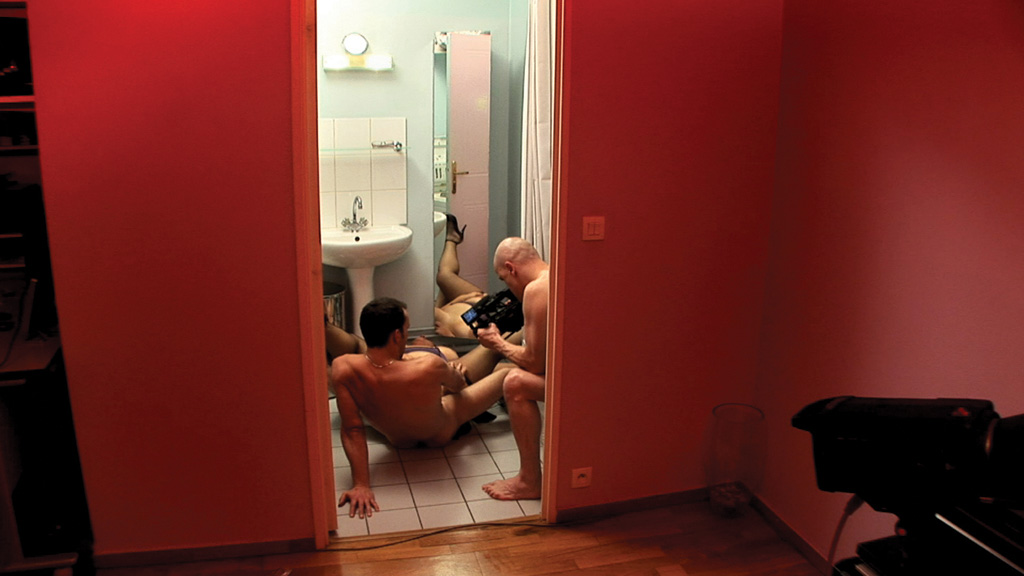
One century after Duchamp’s first readymades, has the time not come to broaden the cinematographic definition of “auteur”? By making the rushes of the making-of film his own and by hijacking the function of the shots of HPG’s camera, Raphaël Siboni has edited the movie, not only in the filmic sense of the term — for the documentary is above all made up of juxtaposed units of footages and sequence shots—, but also in the photographic sense of the editing process, as a choice of scenes to keep from among thousands of recorded hours.
A gonzo film is often shot in real time, in one shot only and in a take almost equivalent to the duration of the movie, itself equivalent to the duration of the “narrative”. One hour of recorded video could correspond to one hour of edited video, itself equivalent to one hour of action. On the contrary, in “There is no sexual rapport”, time seems multiplied or suspended, so that before and after the sex scenes, we can watch long sequences in which nothing appears to happen apart from one main thing: time, which unceasingly passes and shows beings as if in a state of abandonment, of rest, of sculptural pose, or as if floating outside their own bodies. The status of the camera, as eye-machine and technology of the gaze, of course reminds us of the preoccupations found in Raphaël Siboni’s work through his collaborations with Fabien Giraud. With “The Outland”, an installation exhibited at La Force de l’Art in 2009, the viewer faces a simulator: a sealed black monolithic cube mounted on jacks, animated with violent motions. A machine is usually designed as a pseudo-vehicle or a space to be experimented from the inside, but here, it is reduced to mere exteriority, an object whose contents remain inaccessible, like a black box shut upon its own mystery. In the video "La Vallée Von Uexküll" (2009), while filming a sunset with the aid of a camera deprived of a lens and an objective, the two artists explored the limits of what is visible as well as the transformation of light into an image, and of the retinal perception into a mental perception.
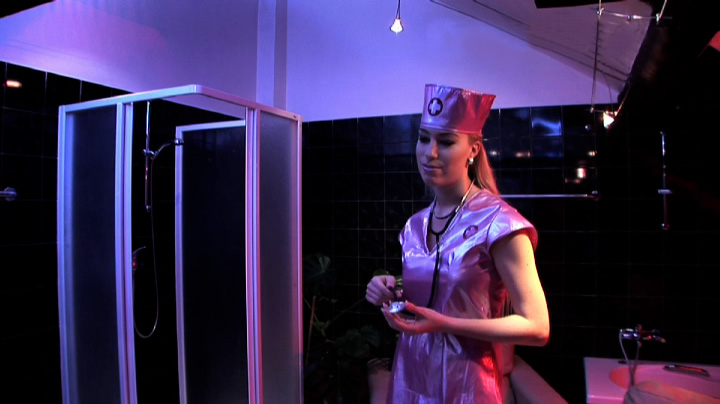
With “There is no sexual rapport”, Raphaël Siboni continues his exploration of perception and uses porn as a subject to better question the nature of cinema: its origins, its essence and its taboos. With porn, cinema returns to its voyeuristic and lustful origins: to see without being seen.
PHOENIX, ARIZONA
FRIDAY, DECEMBER THE ELEVENTH
TWO FORTY-THREE P.M.
The time does not indicate the exact moment of the crime or the murder, but that of voluptuousness and pleasure. Such is the famous opening scene of “Psycho” (1960) by Alfred Hitchcock in which a pan shot embraces the urban landscape and zooms in on the city; then the camera moves through space to slip under the blinds of a half-open window, where, sitting on the edge of a bed with crumpled sheets and languid pillows in a hotel room, a couple is about to get dressed. The all-powerful turgescence of the Hitchcockian gaze which pierces into space is also expressed through his use of frontal and floating tracking shots that follow the characters, in the same way as a sleeping, levitating body would follow a woman in the street like in a dream.
The essence of cinema also lies in the invention of the close-up. In porn cinema, the art of the close shot on faces, sensory organs and emotions is replaced by the organs of sex and pleasure: breasts, buttocks, thighs, vulva, penis and pelvis.
As far as taboo is concerned, it is not sexual at all. “Do not pay attention to the making-of camera… I’m going to film you like that. When you look at me, you look at the camera… because when you look at the camera, it’s as if you were looking at the guy who’s going to wank in front of his TV screen”, explains HPG to one of his actresses. In a traditional fictitious work, if an actor gazes at the camera eye (what is called “the returned look” device) the effect is unbearable and taboo, for the viewer is awoken suddenly from the realm of fiction. When the eyes of Perseus’ companions briefly met those of Medusa, they were immediately stupefied, petrified, literally turned into stone statues. In the middle of a movie, when a character, whether an extra or a figure, gazes directly at the camera eye, the viewer is stupefied in the same way, for all of a sudden, as if a spell had been cast on reality, the character leaves the fictitious realm to become what he actually is: an actor, i.e. someone who pretends, feigns and makes believe, and who we do not know if he plays for real or not. In the darkness of the movie theater, the viewer, inherently voyeuristic, watches characters on the screen who are in the limelight and so cannot see him; yet suddenly, like in the Brothers Lumières’s film “The Sprinkler Sprinkled” (1895), the voyeur, or seer, is seen. Once more, as if replying in advance to HPG, JLG reveals the illusory nature of fiction and the taboo of the “returned look” device. Driving a stolen car, the character played by Jean-Paul Belmondo in “À bout de souffle” (1960), turns to the camera and addresses the viewers: “If you don't like the shore... If you don't like the mountains... If you don't like the city... then get stuffed!”
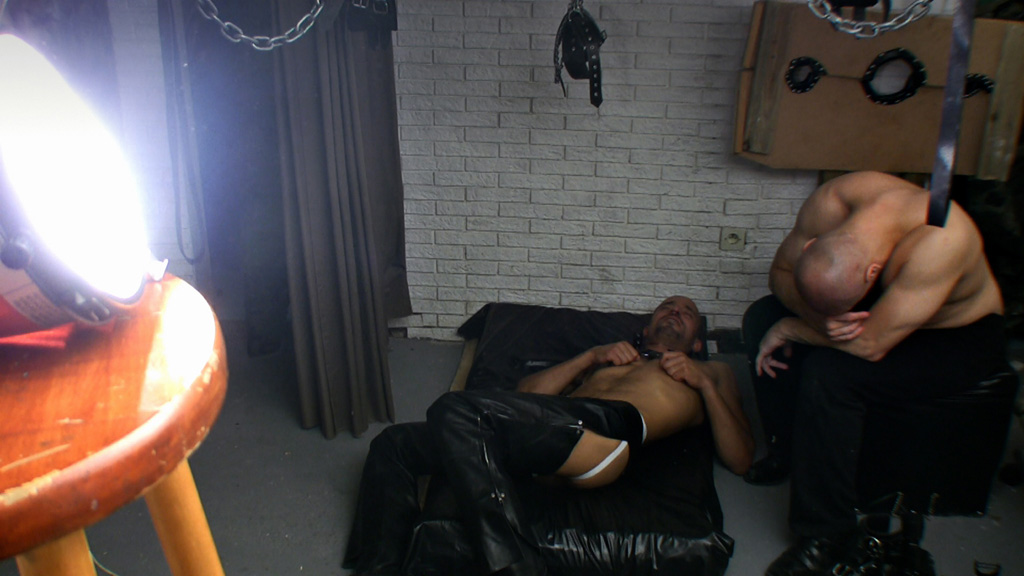
While this returned look device is a taboo in fiction movies, it is a narrative principle in porn movies, in which the reign of what is visible is total and coextensive not to reality but to the hyper-realistic dimension of the perception these movies propose. With porn cinema, dichotomies such as illusion/reality, simulation/truth, direct cinema/ false cinema, fiction/documentary, are irrelevant. The pornographic destiny, beyond good and evil, beyond truth and pretense, is the unceasingly renewed production of images representing a pure excitation, retinal and visual obsession. Raphaël Siboni says he plans to direct a pornographic movie in UHD — or Ultra High Definition —, a still experimental format of digital video whose resolution is 16 times the number of pixels of HDV. Pornography in UHD is equivalent to 33 million porn pixels. “The image is so highly defined that it may cause the viewer to vomit”, explains the auteur of “There is no sexual rapport”.
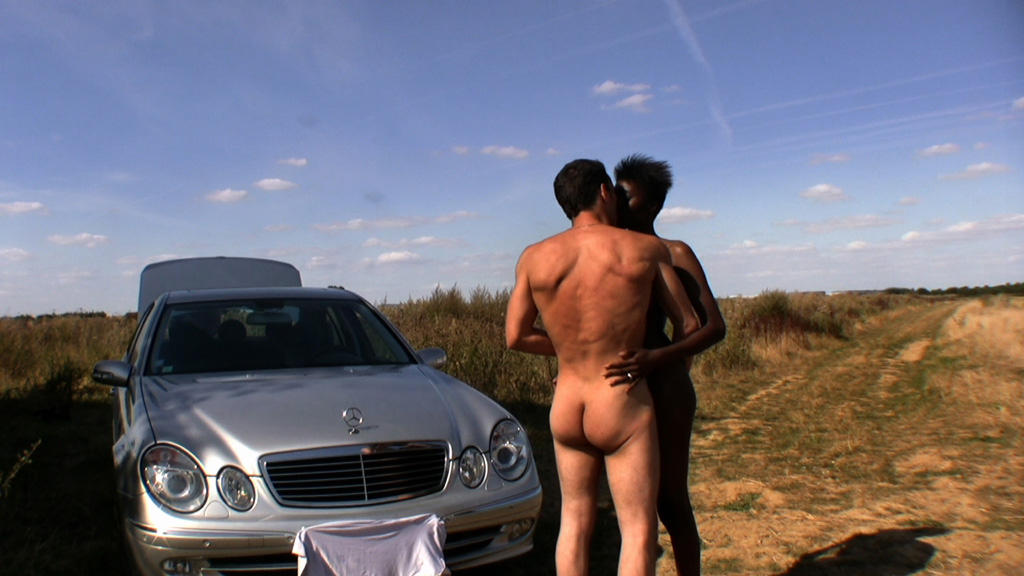
The Lacanian aphorism, “There is no sexual rapport”, refers to the absence of “rapport” or relation hidden behind this phrase. Looking into each other’s eyes, in total harmony, one over the other, one under the other, one inside the other: these are images, an imaginary representation and the “sexual rapport” a metaphor. Thus there would not be any “rapport”, only an act and a pleasure which remains solitary. We could claim that the film “There is no sexual rapport” expresses Lacan’s statement in an almost literal, or even tautological, way. Though we should not forget the disquieting and comical weirdness of the film, which plunges the viewer in the vision and observation of the unique, unexpected, unpredictable and insoluble character of beings of flesh and sexual labor. Despite the nakedness and the intimacy of the revealed bodies, the sex workers remain inaccessible and elusive strangers. Nothing will be unveiled about them. The viewer will watch the act of sex in spite of himself, in the same way as the making-of camera films in spite of itself. In Latin, “video” means “I see”. “To see is to forget the name of the thing one sees”, wrote Paul Valéry.
* Not to be confused with the spermophilus, also known as suslik, actually a ground squirrel who, like any other rodent of its family, loves seeds, its name being derived from the Greek sperma – « seed » and philein – « love »
Alessandro Mercuri
(Translated from the French by Blandine Longre and Paul Stubbs)
TAGS : Il n’y a pas de rapport sexuel, There is no sexual rapport, documentary, Kino-Porno-Pravda, pornography, camera, Raphaël Siboni, HPG, Jacques Lacan, HDV, High Definition Video, gonzo, porn, spermophilus, shooting, softcore, hardcore, striptease, sex, simulation, fellatio, copulation, ejaculation, Georges Bataille, Story of the Eye, strip-tease, brothel, dark room, camera oscura, Brothers Lumière's, prostitution, spectacle, making of , film noir, packshot, cumshot, Jean-Luc Godard, Detective, Emmanuelle Seigner, X, obscene, Carmelo Bene, William Shakespeare, Marcel Duchamp, ready-made, Fabien Giraud, The Outland, La Force de l'Art, La Vallée Von Uexküll, Psycho, Alfred Hitchcock, taboo, voyeurism, The Sprinkler Sprinkled, Breathless, UHD, Ultra High Definition, video, Linda Williams, Paul Valéry
NEXT POST >>










